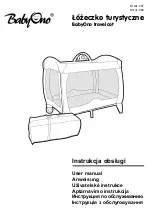
pieces that provide low powers (50x and below should work
with most telescopes) if you wish to have the entire surface of
the Moon in your field of view.
Try to avoid photographing the full moon since sunlight falling
directly on lunar surface will mean there are very few shad-
ows, so details will be harder to see. Instead, photograph the
Moon when it is in one of its partial phases, when the angle of
the sun provides many detailed shadows on its surface. You
might also want to use an optional Moon filter that threads
onto the bottom of the eyepiece to bring out more subtle fea-
tures on the lunar surface.
the Bright Planets
Next to the Sun and the Moon, the planets Mars, Venus,
Jupiter and Saturn are the brightest objects in the sky and
make excellent targets for photography. Keep in mind that the
planets don’t stay still like the stars, so to find them you should
refer to Sky Calendar at our website (telescope.com), or to
charts published monthly in Astronomy, Sky & Telescope, or
other astronomy magazines.
To get the right amount of detail on the planets, eyepieces that
give high powers (at least 75x or more) should be used when
using the SteadyPix. Low powers will make it easier to find the
planets, but they will not bring out any significant details on
the planets to make them worth photographing. High powers
must be used to get images of the famous details of the plan-
ets, such as the rings of Saturn or bands on Jupiter’s surface.
You might also consider using colored planetary filters that
thread onto the bottom of the eyepiece (just like the Moon filter
does). These colored filters bring out the subtle detail of the
planets by filtering out various colors that reduce detail. Orion
has several sets of colored filters available. Visit our website,
telescope.com, for more information on colored planetary fil-
ters
Deep-sky objects
Since deep-sky objects are very faint, use only digital camer-
as to photograph them when using the SteadyPix. Film
cameras require too much exposure time to get good results.
A few bright deep-sky objects can be photographed effectively
using your SteadyPix (such as the Orion Nebula). Other
deep-sky objects may also be photographed for interesting
pictures. Try experimenting with different deep-sky objects to
see what kind of results you can obtain.
8. Push the threaded bolt of the eyepiece securing knob
through the larger of the two holes on the top of the eye-
piece clamp. Make sure it lines up with the smaller hole on
the other side of the clamp. Thread the bolt into the smaller
hole by turning it clockwise. Do not thread it more than a
few turns.
9. You are now ready to use the new clamp to secure eye-
pieces. Replace the shaft in the camera support plate as
described in the assembly section (Part 1).
5. What to photograph with
the steadyPix
Now that you have assembled the SteadyPix, the only ques-
tion remaining is “What do I want to photograph?” We have a
few suggestions for you:
terrestrial Photography
With literally millions of objects to photograph on earth, there
are only a few hints we can give for using the SteadyPix for
terrestrial photography. One is to consider using a telescope
with an Alt/Az (short for altitude/azimuth) mount on a sturdy
tripod. An Alt/Az mount will allow simple up/down, left/right
motions of the telescope so that you can easily adjust and aim
the camera. Equatorial mounts (mounts designed to track the
movement of stars in the sky) are not recommended, as they
will be needlessly heavy due to the counterweight, and their
ability to track celestial objects is of no use when photograph-
ing an object like a bird’s nest. In fact it will likely get in the way.
Dobsonian mounts will also have trouble with terrestrial pho-
tography since aiming a Dobsonian mounted telescope at
something close to the horizon (where most terrestrial photog-
raphy takes place) will mean it has to be very low to the ground
and hard to use.
Remember that objects viewed through certain types of tele-
scopes can be oriented backwards, upside-down, or both.
the Moon
The Moon is one of the easiest and most interesting targets to
photograph. With its rocky, cratered surface there is a wealth
of detail to be photographed with your camera and SteadyPix.
The Moon is a very large target, so at higher magnifications
you will only get a part of the surface in each picture. Use eye-
6

























